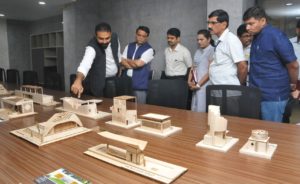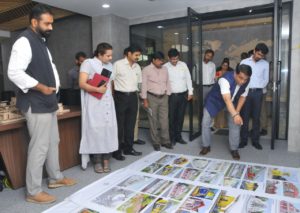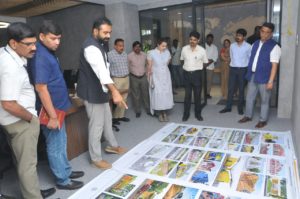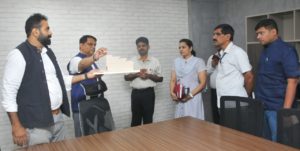The Principal Secretary Municipal Administration Arvind Kumar along with GHMC Commissioner Lokesh Kumar went round an exhibition of various types of toilets at MAUD campus in the city today. The exhibition was organised by a Mumbai based organisation to sensitise the zonal commissioners and engineers of GHMC about the various types of public toilet designs available which can be built in the city. It may be recalled that during a recent review meeting, the Municipal Administration Minister Mr K T Rama Rao has asked the GHMC engineers to build 3000 toilets in the city.
The 10 types of public toilets for the cities and villages that are socially sustainable and are integrated in everyday life of people are on display at the exhibition. Portable toilets, bus stop toilets, railway toilets, pavement toilets, highway toilets, urban toilets, anganwadi toilets, community toilets, park toilets and women only toilets are on display at the exhibition.
Mr Kumar asked the Zonal Commissioners to identify suitable sites in their respective areas so as to enable the architect Mr Kalpit Ashar to suggest the best possible model for constructing toilets. He also asked the architect to suggest the space required for constructing different types of toilets so that the GHMC officials can plan for their areas accordingly. He directed the GHMC commissioner Lokesh Kumar to involve all the engineers so that the process can be expedited.
Mr Kalpit Ashar informed the principal secretary that the exhibition initiates a new discussion on nature of infrastructure where they are not only problem solving solutions but are holistic public spaces integrated in everyday lives of people. The framework sets up a pool of various parameters such as sanitation technology, recycling systems, construction method, affordability, maintenance model, operational cost, maintenance cost delivery model, he said. At present similar toilets are being built in seven cities of Rajasthan including Jaipur, Udaipur, Ajmer, Bikaner and Kota on 34 sites. The sites includes bus stops, bus stations, urban parks, markets, stadiums, government office complexes, hospitals, public squares and junctions, he added.
























